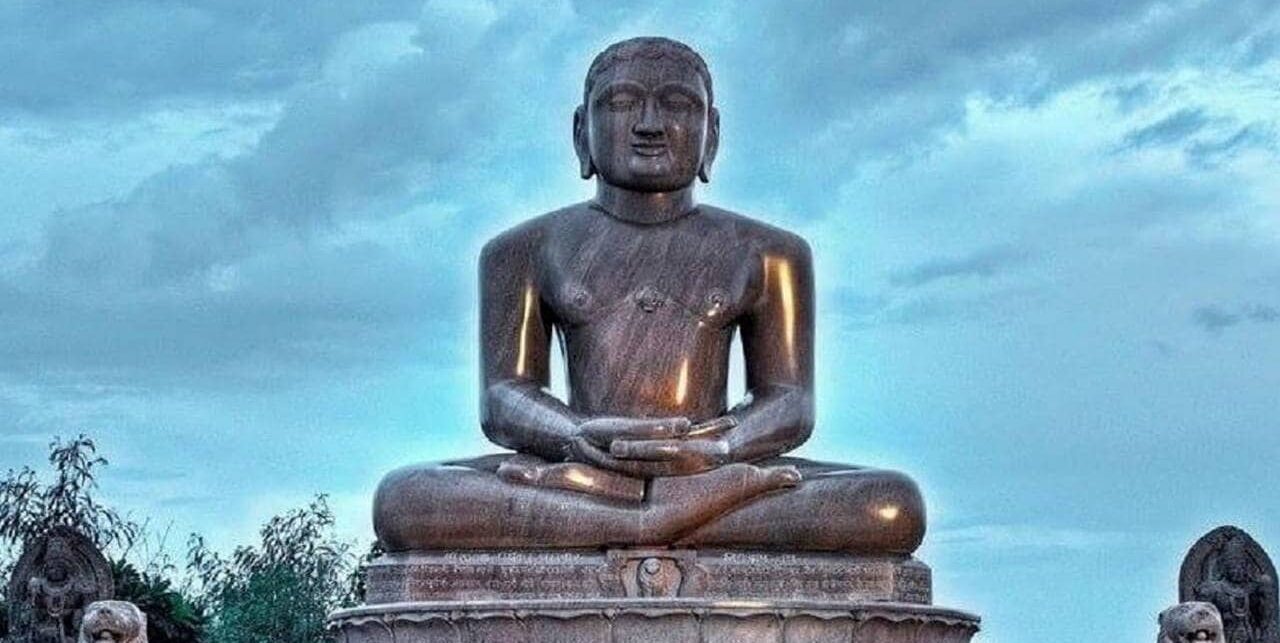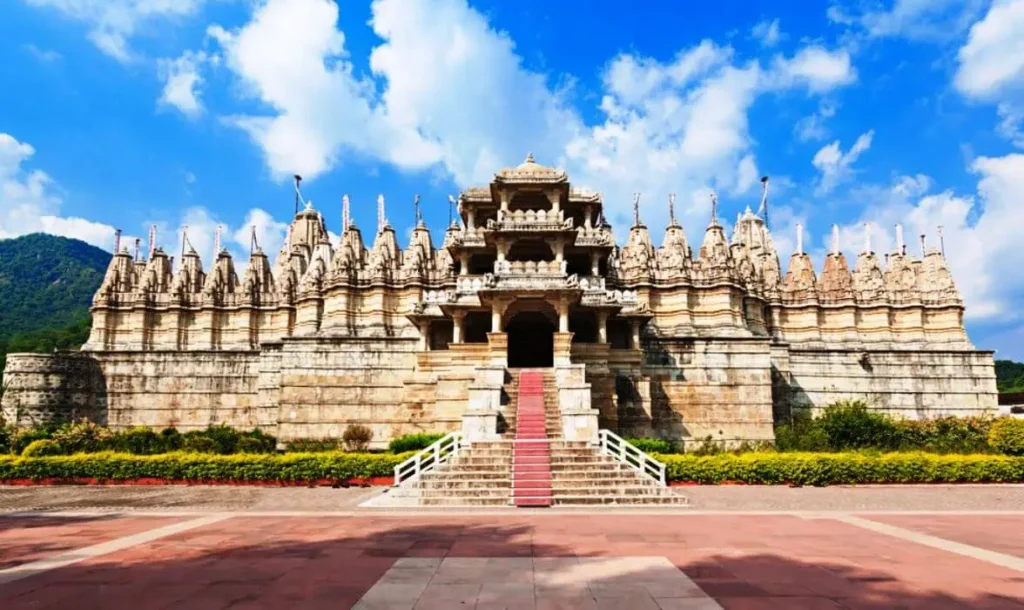Table of Contents

Introduction: Jainism
Jainism is one of the oldest living religions in the world. Its followers, known as Jains, adhere to principles of non-violence, truth, non-stealing, celibacy, and non-attachment, striving for spiritual liberation from the cycle of birth and death.
The tradition traces its origins to Bardhaman Mahavira, who is widely regarded as the founder of Jainism. However, Jains believe Mahavira to be the 24th Tirthankar, or spiritual teacher, in a lineage that stretches back through 23 predecessors. The 23rd Tirthankar, Parshvanatha, is mentioned in Jain scriptures and is thought to have been a historical figure.
Central to Jain doctrine is the concept of ahimsa, or non-violence, which extends not only to physical actions but also to thoughts and speech. Jains strive to minimize harm to all living beings, practicing vegetarianism and often leading lives of simplicity and compassion.
Throughout its long history, Jainism has left a profound impact on Indian culture, philosophy, and art, influencing ethical codes, architectural styles, and literary traditions.
Jainism
- Jainism is one of the oldest religions still practised today.
- The followers of this religion are known as Jains.
- Bardhaman Mahavira is generally considered to be the founder of Jainism. However, Jains believe that he was the last Tirthankar among 24 Tirthankaras.
- The 23rd Tirthankar, Parshanatha as mentioned in Jain literature, was probably a historical figure.
Life of Mahavira
| Titles | Mahavira, Nayaputa, Jina (conqueror of the senses) and Nirgrantha (Free from Marital bonds). From these two words, his followers got the name ‘Jains’ or ‘Nirgranthas’. |
| Birth | 599 BC Mahavir Janma Kalyanak festival is celebrated as the birth anniversary of Mahavira |
| Place of Birth | Kundagrama in Vaishali (present-day Vaishali district, Bihar) Vaishali was the capital city of Vajji Mahajanpad |
| Father’s Name | Siddhartha |
| Mother’s Name | Trishala (A Licchavi Princess, Sister of Chetaka) |
| Wife | Yashoda |
| Enlightenment (Kaivalya Gyana) | Under a Sal tree on the bank of the River Rijupalika near Jrimbhikgram (modern-day Jamui, Bihar) At the age of 43 |
| Death | 527 BC, Pavapuri (present-day Nalanda district, Bihar) Vira Nirvana Samvat (Calendar Era) begins in 527 BCE |
Tirthankaras
- According to Jainism, tirthankaras are the spiritual teacher who attained moksha (liberation from the cycle of death and rebirth).
- Panch Kalyanaka is the 5 auspicious events that occurred in the life of Tirthankara.
| Name | Symbol | Place of Nirvana |
|---|---|---|
| Rishabhanatha (1st Tirthankar) Rishabhanatha is mentioned in the Rigveda, Vishnupurana, and Bhagwata Purana. | Bull | Mount Kailash |
| Parshvanatha (23rd Tirthankar ) | Snake | Shikharji ( located on Parasnath hill) |
| Mahavira | Lion | Pavapuri (located in the Nalanda district of Bihar) |
Philosophy of Jainism
- Jains believe that a conscious soul (jiva) exists within every object.
- They reject the theory that the world was created by a supreme power.
- They have faith in the concept of “karma” in Hinduism.
| The three main pillars of Jainism | Ahimsa (non-violence), Anekantavada (non-absolutism),and Aparigraha (asceticism) |
| Dravyas | According to Jainism, the universe is made up of six eternal Dravyas (substances): 1. Souls (Jiva), 2. Matter (Pudgala), 3. the principle of motion (Dharma), 4. the principle of rest (Adharma), 5. space (Akash), and 6. time (Kal). The last five are called ajiva (the non-living). |
| Tattva | There are seven tattvas in Jain philosophy – 1. jiva, 2. ajiva, 3. asrava, 4. bandha, 5. samvara, 6. nirjara, 7. moksha. |
| Anekantavada | No single, specific statement can describe the nature of existence and the absolute truth. The concepts of nayavada (partial viewpoints) and syadvada (conditioned viewpoints) are derived from anekantavada in the medieval era. |
| Nayavada | 1. It is the theory of partial viewpoints. 2. Nayas are partially valid, philosophical perspectives from which anything can be seen. 3. Jain philosophers use this theory to explain the complexity of reality. |
| Syadvada | It is the theory of conditioned predication. |
| Jain cosmology | Jainism does not believe in the idea of a god as the creator of the universe. According to Jain cosmology the universe has existed since infinity and will exist forever. It describes the shape and functioning of the Universe and its constituents. |
| Moksha | Moksha is the liberation of a soul from the cycle of birth and death. It is the main objective that a soul should achieve. A soul has to pass through the 14 stages of spiritual development and growth to attain moksha. These stages are called Gunasthana. |
| Tri Ratna (triple jewels of Jainism) | According to Jainism, liberation means complete liberation from the cycle of birth and death. The means of attaining this liberation is the pursuit of the Tri-Ratna. These three jewels are – Right faith (Samyak Darshana), Right knowledge (Samyak Gyana), and Right conduct (Samyak Charitra). |
Five vows
- Ahimsa (Non-violence)
- Satya (Truth)
- Asteya (Non-stealing)
- Brahmacharya (sexual continence)
- Aparigraha (Non-possession of property)
Important terms related to Jainism
- Arihant is a jiva (soul) who has conquered inner passions such as attachment, anger, pride, and greed. Arihants are called kevalins as they possess Kaivalya jnana (infinite knowledge).
- Agamas – Teachings of Mahavira.
Sects in Jainism
- At the time of Chandragupta Maurya, there was a 12-year famine in Magadha.
- Chandragupta Maurya along with Bhadrabahu (head of the Jain community at that time) migrated to Shravanabelagola (Karnataka) with his adherents.
- Sthulabhadra (another Jain leader) stayed back at Magadha.
- When followers of Bhadrabahu returned, there was a dispute between those who stayed at Magadha regarding the authenticity of the Angas.
- These disputes led to the division of the Jains into Svetambaras (wearing white cloth) and Digambaras (remaining naked).
| Svetambara | Digambara |
|---|---|
| Svetambara communities are currently found in Gujarat, Rajasthan, and the coastal regions of Maharashtra | Digambara monks do not possess any material goods. They worship nude idols of tirthankaras. Female monastics in the Digambara tradition are known as “aryikas“. |
Jain Literature
- Tattvarthasutra is regarded as one of the earliest, most authoritative texts in Jainism which is accepted as authoritative in both sects, Digambara and Svetambara.
- It is written sometime between the 2nd and 5th century CE by Acharya Umaswami in Sanskrit.
- It is a philosophical text, and its importance in Jainism is comparable with that of the Brahma Sutras and Yoga Sutras of Patanjali in Hinduism.
- One of its sutras, Parasparopagraho Jivanam is the motto of Jainism. It stresses the philosophy of non-violence and ecological harmony on which the Jain ethics and doctrine especially the doctrines of Ahimsa and Anekantavada are based.
Jain Council
| 1st Jain Council Year – 300 BC Location – Patliputra Chairman – Sthulabhadra Chandragupta Maurya | Compilation of 12 Angas |
| 2nd Jain Council Year – 512 AD Location – Vallabhi | Compilation of 12 Angas and 12 Upangas |
Jain Architecture
- Siddhachal Caves: The statues of 24 Tirthankaras are carved in this cave. It is located inside Gwalior Fort.
- Dilwara Temples, Mount Abu, Rajasthan: Known for their exquisite marble carvings, the Dilwara Temples are a group of five Jain temples dedicated to different Jain Tirthankaras.
- Ranakpur Jain Temple, Rajasthan: Located in the village of Ranakpur, this temple is dedicated to Adinatha, the first Tirthankara of Jainism. It is famous for its stunning architecture, including 1,444 intricately carved marble pillars, each unique in design.
- Shikharji Temples, Jharkhand: Shikharji is a revered Jain pilgrimage site where 20 of the 24 Tirthankaras are believed to have attained Moksha (liberation).
- Palitana Temples, Gujarat: Situated on the Shatrunjaya hill, the Palitana Temples are a cluster of over 900 Jain temples, making it one of the holiest Jain pilgrimage sites.
- Shravanabelagola, Karnataka: Home to the colossal monolithic statue of Bahubali (Gommateshwara), Shravanabelagola is an important Jain pilgrimage centre. The statue, carved out of a single granite rock, is one of the tallest monolithic statues in the world.
- Sonagiri Temples, Madhya Pradesh: Sonagiri is a significant Jain pilgrimage site known for its cluster of 77 Jain temples, including a group of 57 temples on a hill and 20 temples at the base.
- Kulpakji Temple, Telangana: Also known as Kolanupaka Jain Temple, this ancient temple is dedicated to Lord Rishabhanatha, the first Tirthankara.
- Saavira Kambada Basadi Jain Temples: Located in Moodubidiri town, Karnataka. Moodabidri is known as the “Jain Varanasi” of South India.

Important Terms Related to Jainism
| Kayotsarga | A yogic posture that is a part of the Jain meditation. |
| Avasarpini | The descending half of the cosmic time cycle. |
